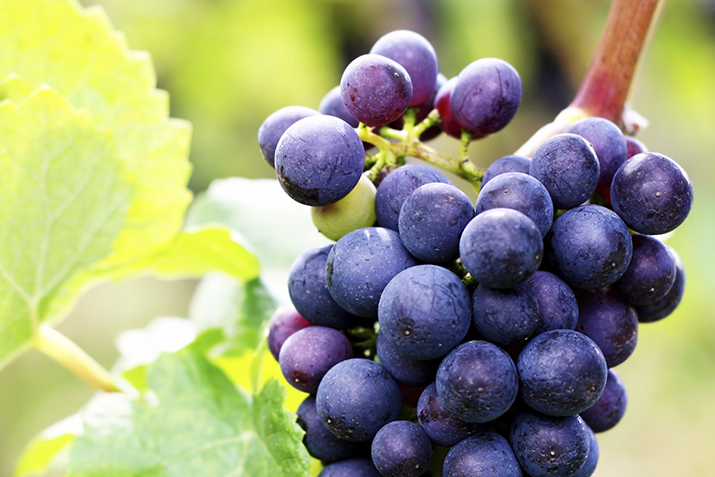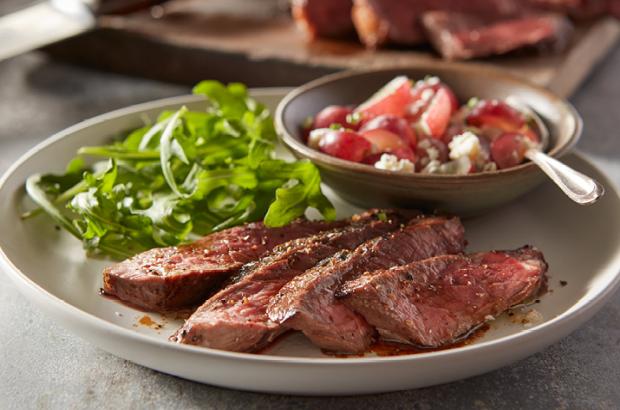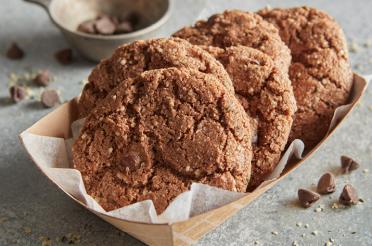Article
Grapes

The image of a Roman emperor eating grapes—peeled by a doting servant, of course—is a classic one. Cultivated as early as 5,000 B.C. in Asia, the "fruit of the gods" has also been depicted in Egyptian hieroglyphics (the ancient Egyptians were winemakers, after all). By the second century A.D., over 90 varieties of grapes were known.
Fast forward to today, when many thousands of grape varieties are cultivated. Grown commercially in 90 countries around the world, the largest grape producers are Italy, France, Spain, the United States, Mexico and Chile. In the U.S., the main grape-growing states are California (the largest, with 800,000 acres in production), Washington, New York, Michigan and Pennsylvania. Some varieties prefer mild, frost-free winters, but there are others that do well in colder climates.
What more could you ask for in a snack? Grapes are refreshing, sweet and—with a water content of 80 percent—low in calories. They're an excellent source of vitamins K and C and a good source of dietary fiber and those highly touted antioxidants; antioxidant levels increase as the grape ripens. Little did those emperors know they sacrificed nutrients in those discarded peels.
There are two basic species of grapes, European (Vitis vinifera) and American (Vitis labrusca and Vitis rotundita). There are seeded and seedless varieties of both, and those with seeds are generally thought to be more flavorful. There are also French hybrid grapes, developed from European varieties.
European grapes are also grown in the U.S. today and are used for eating and making wine and raisins. They have thin skins that don't peel away easily. Examples of European grapes include Black Beauty, a seedless black, spicy/sweet grape; Emperor, a seeded red/purple grape that travels well; Flame Seedless, a round, pink/red sweet/tart variety; and Thompson Seedless, an oval, light green, very popular grape.
American grapes have skins that peel away more easily than on European grapes, and so they've earned the name slipskin grapes. The red/purple Catawba grape, used mostly to make juices and preserves, and the deep purple, very sweet Concord, also used in juices and preserves, are American varieties.
Grapes are also categorized according to whether they're "table grapes" or "wine grapes." The name "table grape" applies to a grape that's used in recipes or eaten as is. Thompson Seedless, or Sultana, is a table grape, as is the Ruby Seedless (a red, oval, crisp grape) and Perletee (a small, round and green grape with a white frost). Champagne, a tiny, purple, seedless table grape, is also used to make currants.
Wine grapes—you guessed it—are used to make wine, and they're characterized by their acidity, body and alcohol content. Examples include: cabernet sauvignon, a very popular red grape; chardonnay, a mild white grape; merlot, a black grape often used in blends; pinot noir, a French red grape; and zinfandel, a black grape used in the U.S. to make a semi-sweet rosé.
Raisin grapes, most notably Thompson Seedless, are used for drying to make raisins.
Grapes are pure pop-in-your-mouth goodness, and no preparation beyond a good rinsing is necessary. A range of colors—red, purple and frosty green—makes a pretty plate for easy entertaining or an after-school treat. Speaking of kids' snacks, you'll want to try these Fruit Flower Blossoms, featuring grapes on wooden skewers with melons and berries—delicious, nutritious and fun!
As ideal as they are as a snack food, though, grapes also enliven other dishes. Try them in a chicken curry or a rice or pasta salad, for example. Grapes are a beautiful addition to fruit salads, too, especially when they contain apples, like this Waldorf Salad with Yogurt and Honey and this Brown Bag Apple Salad.
In general, American grapes are available in September and October, and European grapes are available year round.
Look for plump, wrinkle-free grapes. Purple and blue-black varieties should be deeply colored, red grapes should be mostly red, and green grapes should have a bit of a yellow hue.
Store grapes in the refrigerator, loosely wrapped in a paper towel and then in a plastic bag, where they'll keep for several days. Wash just before eating, then pat dry or drain in a strainer.












